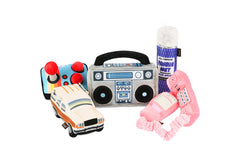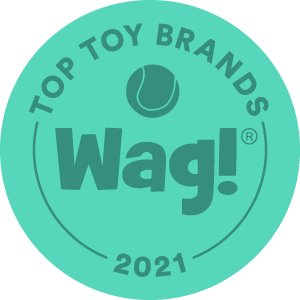A lot of dogs have destructive tendencies towards items in your home. It gets particularly complicated when you have to go somewhere, and come back to find that your dog has torn the couch apart. In this case, even if you punish them, they won’t associate the punishment with what they have done. In fact, it might even make things worse – their anticipation of your return will heighten their anxiety and stress and lead to even more destruction. The fact is that for puppies, chewing is part of the teething process, and big dogs tend to chew things out of boredom.
Give them something to chew on
One of the best solutions is that, when you see your dog going at a household item, you should interrupt them and direct their attention to a chew toy. Pack your freezer with a stuffed Kong toy in a Ziplock bag, and take it out whenever it is necessary. A lot of dogs have a particular time of day when they feel like chewing on something, so you can correct this behavior by teaching them to play with a proper chewing toy at the given moment.
Check out the dog’s environment
One of the biggest causes of destructive chewing is stress. It can come from the dog’s environment, and then they will look for a way to relieve tension by barking, digging, pacing, or chewing. It is your responsibility to find the source of the stress for the dog and take care of it. For example, if you have a dog that sits on your couch and looks outside while you’re away, only for you to return and find the couch ruined, maybe the problem could be found outside, such as in the neighbor’s cat. Apply a solution to your window so that your dog doesn’t see it, et voila – the stressor is gone.
Use sprays and repellents
Sprays and repellents are a way to keep puppies and dogs away from items you don’t want them to chew on via impersonal correction. This is where the environment basically does the job for you. You can spray items with a homemade dog repellent, or place a Scat Mat on the countertop’s edge. It’s the kind of training that works the same way as for children touching a hot stove. If your dog interacts with something that makes them feel bad, they will most probably not do that ever again.
Provide your dog with exercise
If your dog tends to do destructive things, then exercise is an essential part of their care. If the dog is tired, there’s much less probability that they will feel like doing something like that. The thing about exercise is that it produces endorphins, which calm the pup down. The fact is that chewing also stimulates endorphins, so if your dog isn’t getting the appropriate amount of exercise, he may be looking for a way to replace the necessary endorphins by releasing energy through nibbling on household items.
Dog-proof your house
It’s a simple fact – managing the environment is one of the key factors for changing your dog’s behavior. Every household that has a puppy needs to be puppy-proofed. Place all the valuable items, such as your shoes and accessories, in their respectable places, so your puppy can’t get to them. If you are unable to supervise your pup at the moment, place them in their puppy crate. The fact is that adult dogs tend to need the same kind of management as well. If you really don’t want some of your furniture damaged, you can make use of cheap storage solutions.
In summation
Remember that you simply have to be gentle with your dog. You will come across training books that suggest some pretty ugly methods for solving problems with destructive behavior. These include duct-taping your dog’s mouth, or hurting your pet physically. There are very unfair methods that are, in fact, most often ineffective, and will only make your dog harder to control. What every puppy and dog need is proper management. Crating a dog when you aren’t around is one of them. The same goes for providing your pet with proper exercise, which easily takes care of destructive behavior.





